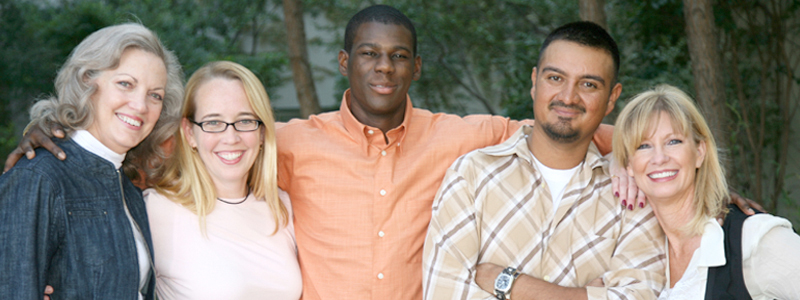Laparoscopic & Robotic Cholecystectomy
Gallbladder Conditions

Cholecystectomy is the surgical removal of the gallbladder, a small organ located under the liver. The gallbladder collects and releases bile to aid in the process of digestion. Although the gallbladder performs a digestive function, it is not necessary for proper body functioning and may be removed if diseased.
Most frequently, a cholecystectomy is performed when gallstones are present and causing the patient distress. The gallbladder may, however, be removed for other reasons, such as to remove cancerous tissue. Laparoscopic cholecystectomy is one of the most common operations performed in the United States.
Diagnosis of Gallbladder Disease
- Pain under the ribs on the right, especially after eating greasy foods
- Nausea or vomiting
- Excessive gas and bloating
- Inability to tolerate fatty foods
When a doctor suspects the presence of gallstones or other gallbladder disease, diagnostic tests are available to confirm this condition. There are also several tests to confirm the presence of gallstones, including:
- Abdominal ultrasound
- CT scan
- HIDA, or hepatobiliary iminoacetic acid scan
- ERCP, a type of endoscopy in which dye is used to illuminate the biliary tract
- Blood tests to check for infection or pancreatitis
Treatment
The only effective treatment for gallbladder problems is surgery. The gallbladder is not an essential organ, and its removal is a very commonly performed surgical procedure. Laparoscopic surgical techniques make it possible to remove the gallbladder with minimally invasive methods that allow for a quicker and less painful recovery.
The Laparoscopic Cholecystectomy Procedure
Laparoscopic Cholecystectomy is a minimally invasive procedure in which the gallbladder is removed using only four small incisions, small instruments and a tiny camera that allows the surgeon to see the patient’s organs on a monitor while he or she is operating. A laparoscopic cholecystectomy can often be done as an outpatient procedure or with an overnight stay.
Because laparoscopic surgery is a simpler procedure than open abdominal surgery, there is less scarring and a smaller risk of complications developing.
Robotic Single Incision Cholecystectomy
Robotic single incision cholecystectomy is a minimally invasive procedure for gallbladder removal during which the surgeon controls robotic arms with attached surgical instruments, which enables very precise surgical movements. This new technology allows for a single incision at the belly button. This procedure provides the cosmetic advantage of a single hidden scar without a compromise in safety or efficacy.
Recovery from a Laparoscopic Cholecystectomy
Recovery from laparoscopic cholecystectomy is generally smooth and uneventful. In most cases, the patient is able to return to normal activities in a week, and is back to full pre-surgical wellness within 2 to 3 weeks. The patient is able to resume a normal diet almost immediately after the surgical procedure and should experience no ill effects from the loss of the organ.
Risks of Laparoscopic Cholecystectomy
Even though laparoscopic removal of the gallbladder is a very safe procedure, there are possible risks with any surgery. These may include:
- Excessive bleeding
- Allergic reaction to anesthesia or medication
- Post-surgical infection
- Deep vein thrombosis
- Injury to adjacent organs
During a laparoscopic cholecystectomy, while unlikely, there are also specific risks of:
- Injury to the bile duct or adjacent organs
- Bile leakage
- Post-cholecystectomy syndrome

Approximately one in seven patients experience post-cholecystectomy syndrome after gall bladder surgery with periods of abdominal or back pain, indigestion, diarrhea, and, in extreme cases, fever and jaundice. Post-cholesystectomy syndrome is thought to result from bile leakage into the stomach or bile duct, or from a stone or stones remaining in the bile duct. Medications may help these problems and, usually, this condition resolves itself in a few months without further surgical intervention.
While there are minimal risks to a laparoscopic cholecystectomy, there are greater risks in allowing gallbladder disease to go untreated. Without treatment, the diseased gallbladder may become infected. The patient may also develop an infection of the bile duct, a fistula, a bowel obstruction or even a malignancy in the area.
Our Surgeons Specializing in Laparoscopic and Robotic Cholecystectomy, Gallbladder Surgery Procedures

- Allen Agapay, MD
- General Surgeon
- Peoria
- Learn More

- Nathan Bodily, MD
- General Surgeon
- Gilbert & Mesa
- Learn More

- Ravia Bokhari, MD, FACS
- General Surgeon
- West Phoenix
- Learn More

- Charles Castillo, MD, FACS
- General Surgeon
- Central Phoenix
- Learn More

- Susan Cortesi, MD, FACS
- General Surgeon
- Mesa & Scottsdale
- Learn More

- Lawrence Damore II, MD, FACS
- General Surgeon
- Mesa & Gilbert
- Learn More

- Jordan Glenn, DO, FACS
- General Surgeon
- Peoria
- Learn More

- Rita Hadley, MD, FACS, PhD
- General & Bariatric Surgeon
- Mesa
- Learn More

- Theodore Haley, MD, FACS
- General Surgeon
- Gilbert
- Learn More

- Richard Harding, MD, FACS
- General Surgeon
- Central Phoenix
- Learn More

- Sumeet Kadakia, MD, FACS
- General Surgeon
- Gilbert
- Learn More

- Jon King, MD, FACS
- General Surgeon
- West Phoenix
- Learn More

- Daveshni Kumar, MD, FACS
- General Surgeon
- Mesa & Scottsdale
- Learn More

- Matthew Marini, MD, FACS
- General Surgeon
- Gilbert & Mesa
- Learn More

- Kevin Masur, MD, FACS
- General Surgeon
- Mesa & Scottsdale
- Learn More

- Richard Oh, MD, FACS
- General Surgeon
- Gilbert
- Learn More

- Karthik Raghavan, MD, FACS
- General Surgeon
- Glendale
- Learn More

- Jennifer Reitz, MD, FACS
- General Surgeon
- Gilbert
- Learn More

- Greg Rula, MD, FACS
- General Surgeon
- Mesa
- Learn More

- David Smith, MD, FACS
- General Surgeon
- West Phoenix
- Learn More

- Craig Szafranski, MD, FACS
- General Surgeon
- Mesa
- Learn More

